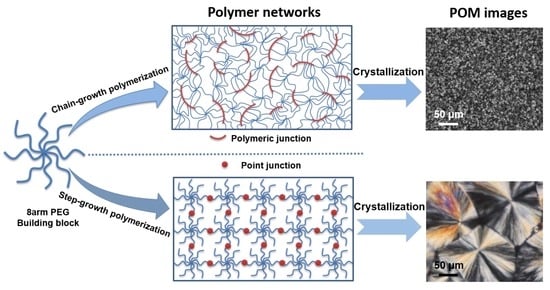Influence of Network Structure on the Crystallization Behavior in Chemically Crosslinked Hydrogels
Abstract
Share and Cite
Zhang, Z.; Li, Q.; Yesildag, C.; Bartsch, C.; Zhang, X.; Liu, W.; Loebus, A.; Su, Z.; Lensen, M.C. Influence of Network Structure on the Crystallization Behavior in Chemically Crosslinked Hydrogels. Polymers 2018, 10, 970. https://doi.org/10.3390/polym10090970
Zhang Z, Li Q, Yesildag C, Bartsch C, Zhang X, Liu W, Loebus A, Su Z, Lensen MC. Influence of Network Structure on the Crystallization Behavior in Chemically Crosslinked Hydrogels. Polymers. 2018; 10(9):970. https://doi.org/10.3390/polym10090970
Chicago/Turabian StyleZhang, Zhenfang, Qian Li, Cigdem Yesildag, Christoph Bartsch, Xiaoyuan Zhang, Wei Liu, Axel Loebus, Zhiqiang Su, and Marga C. Lensen. 2018. "Influence of Network Structure on the Crystallization Behavior in Chemically Crosslinked Hydrogels" Polymers 10, no. 9: 970. https://doi.org/10.3390/polym10090970
APA StyleZhang, Z., Li, Q., Yesildag, C., Bartsch, C., Zhang, X., Liu, W., Loebus, A., Su, Z., & Lensen, M. C. (2018). Influence of Network Structure on the Crystallization Behavior in Chemically Crosslinked Hydrogels. Polymers, 10(9), 970. https://doi.org/10.3390/polym10090970







